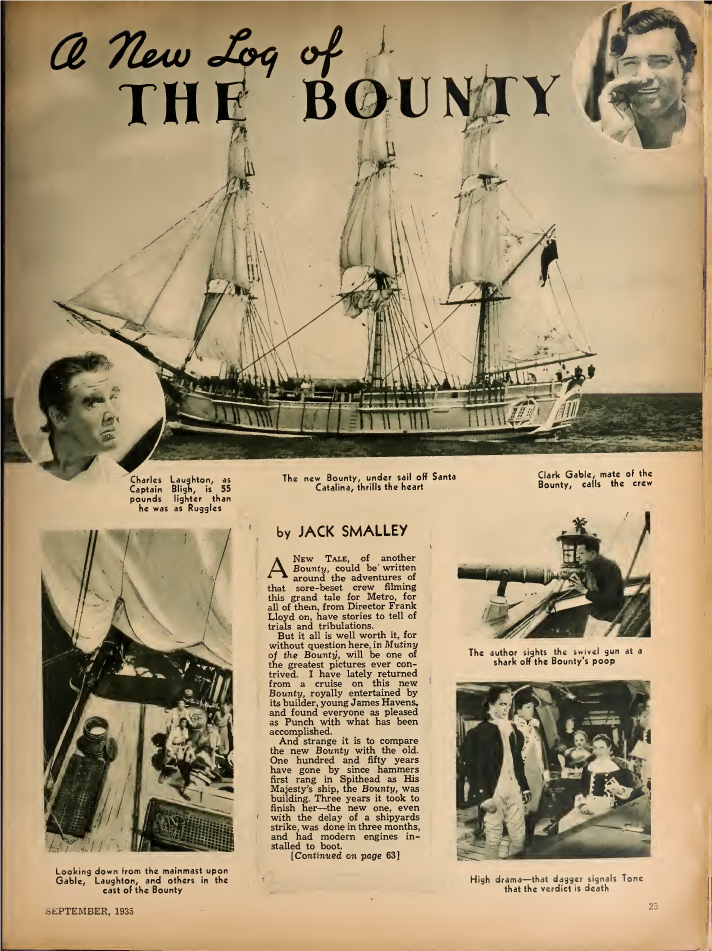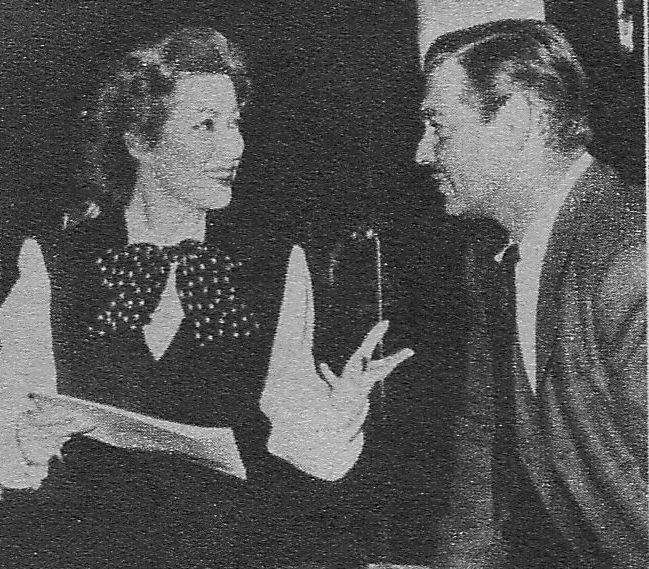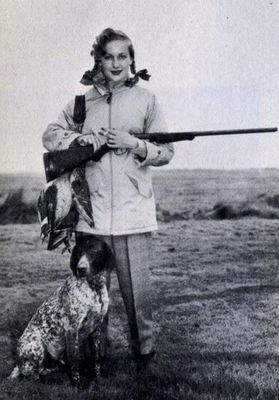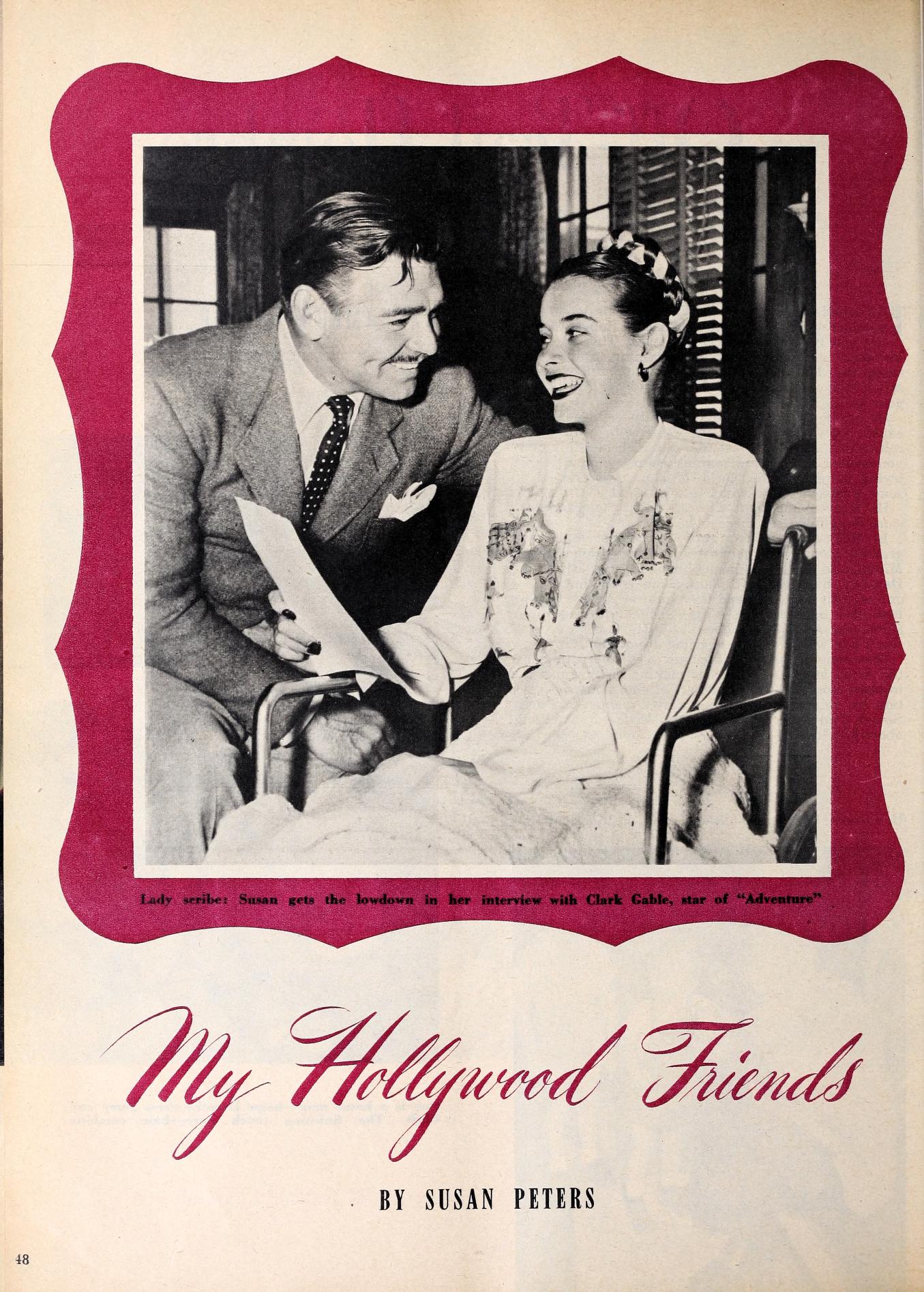
{New Article} 1935: A New Log of The Bounty

This is a short article from 1935 about the filming of Mutiny on the Bounty on Catalina Island. It really doesn’t give much detail except to rehash the history of the events depicted in the picture.
A new tale, of another Bounty, could be written around the adventures of that sore-beset crew, filming this grand tale for Metro, for all of them, from Director Frank Lloyd on, have stories to tell of trials and tribulations.
But it all is well worth it, for without question here, in “Mutiny on the Bounty,” will be one of the greatest pictures ever contrived. I have lately returned from a cruise on this new Bounty, royally entertained by its builder, young James Havens, and found everyone as pleased as Punch with what has been accomplished.
And strange it is to compare the new Bounty with the old. One hundred and fifty years have gone by since hammers first rang in Spithead as His Majesty’s ship, the Bounty, was building. Three years it took to finish her—the new one, even with the delay of a shipyards strike, was done in three months, and had modern engines installed to boot.
The yearly wage earned by Captain Bligh, even with his petty thieving of the ship’s stores, wouldn’t pay the salary of Charles Laughton for ten days. Laughton went into this role with characteristic abandon; so intense is his desire to enact each new character differently that he reduced fifty-five pounds to become Captain Bligh. Those who have seen Charlie at mealtime may appreciate this stupendous sacrifice; to others it would be beyond belief. Laughton is Bligh. He has taken to even hating himself.
To Clark Gable, playing Fletcher Christian, has come the opportunity he has long desired—the chance to show his real powers in a character role. In other pictures he has played himself. Now he becomes a man of baffling moods, chafing under cruelties, seething with hatreds born of injustice, until he leads the mutiny and sets Bligh adrift in an open boat.
Clark is ordinarily sunny of disposition. His role will offer a strange contrast. An expert short, he amused himself shooting at sharks that trailed the Bounty every time she put out from the cluster of huts at the isthmus of Catalina.
After seizing the ship, Fletcher Christian returned to Tahiti and then sailed into the unknown with part of the crew and a group of native girls. Mating with the natives, they formed a colony on Pitcairn Island and when a boat finally found them, many years later, only one white man was left alive.
A movie of the present colony on Pitcairn was shown the actors while at Catalina; the traces of mingled ancestry are plain on the features of these people, and their language is an odd mixture.
Among those who refused to go to Pitcairn was Roger Byam, from whose point of view the story of the Bounty as written by Charles Nordhoff and James Norman Hall is related. The authors, who live at opposite ends of Tahiti to avoid getting on each other’s nerves, went to the island to escape from civilization after the World War, much as the mutineers sought refuge at Pitcairn.
The role of Roger Byam was one of the biggest plums of the year in Hollywood, and it fell to Franchot Tone by the same sort of accident that put him in “Lives of a Bengal Lancer.” Another actor withdrew to take a different picture assignment and history repeated itself when the Bounty was cast. Robert Montgomery was broken-hearted when other work interfered, and Tone got the job.
The role fits him glove tight, and depend on it, Franchot will emerge a star when the Bounty is shown. He, too, did his share of suffering for the sake of Metro, to make the Bounty. A paining tooth was no fun, marooned as he was at the isthmus, but a boat finally was hired and he had the tooth yanked without delaying production.
Metro chose wisely in casting Franchot, for bear in mind that Gable leaves the picture after the mutiny, and so does Captain Bligh, Laughton and Tone must carry the picture from then on.
Tone, left at Tahiti, had a very tender romance and marriage with a native girl who bears him a child. Searchers from England, aboard the Pandora, capture him and start home. The Pandora is wrecked, but Tone finally comes to trial and is condemned to death, for mutiny. Those are thrilling sequences in the film, and Director Lloyd id doing them full justice. It is planned to actually wreck the Pandora, a smaller sailing ship than the Bounty.
The Bounty itself was burned at Pitcairn by Christian, but whether the ship will be destroyed for film purposes has not yet been decided as this is written. I think it would break Jim Haven’s heart to see his precious boat done to death.
Every man in the large company has done his share to help make the film a success. There were a number of minor casualties despite every sort of precaution. You can’t make an exciting picture of this sort without some risk!
Only three of the eighty-three important character roles in the picture have been mentioned, but you’ll see scores of famous faces in this picture. All are going to win honorable mention from gracious fans when the saga of iron men and wooden ships is brought to the screen in this grand take of love and hate, mutiny and death, reliving the days when the Bounty was the proudest ship afloat, and its captain was the meanest man alive!
Fletcher Christian was indeed a different role for Clark and was an excellent display of what he could really do if he was given a chance at a meaty role. I always cringe when they say he “played himself” in all his roles, as this is not entirely true. He wasn’t so much “playing himself” as he was playing the role the people were used to.
The entire article is above and also in The Article Archive.
(#9 Article Posted in 2019)



